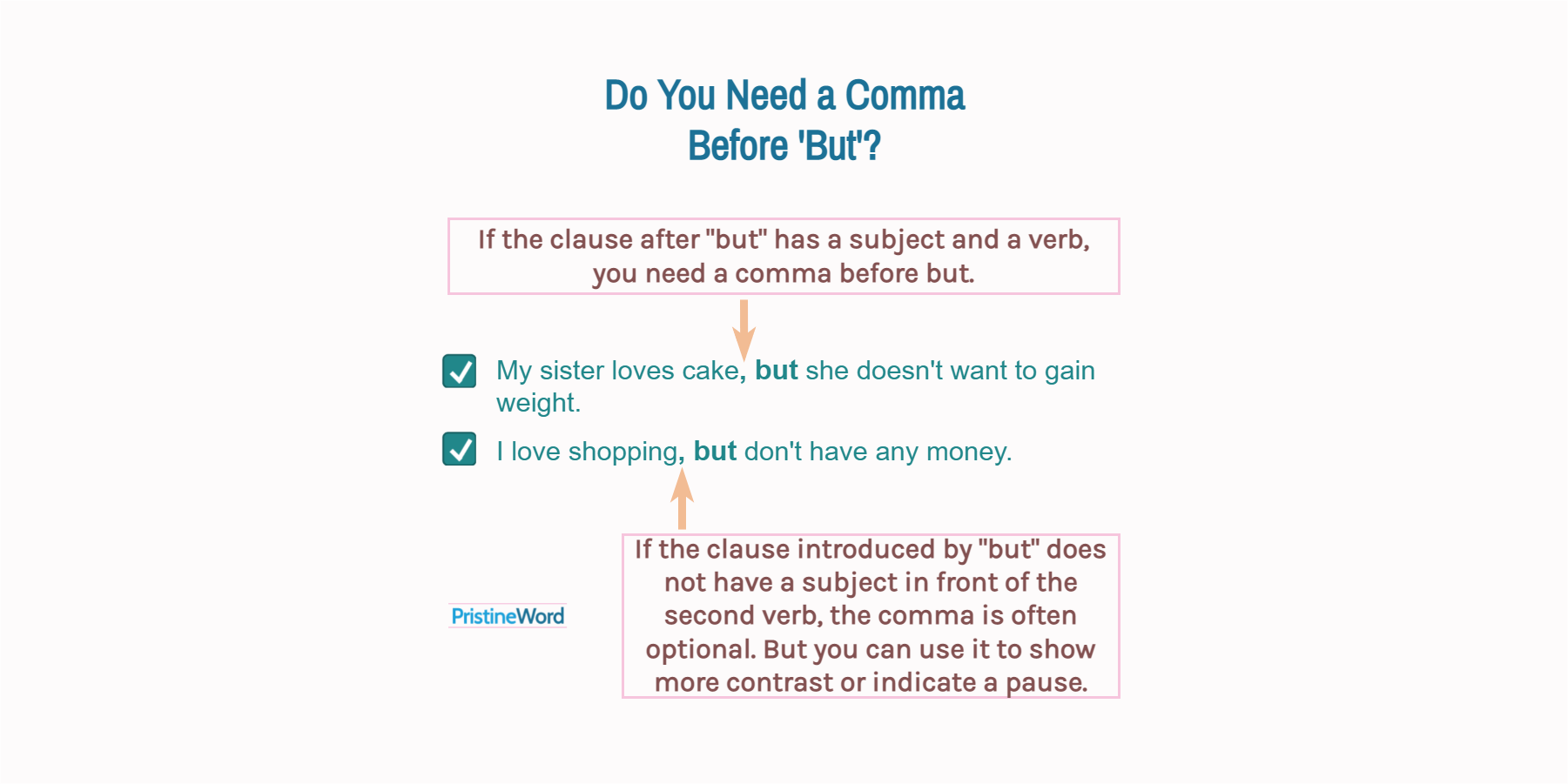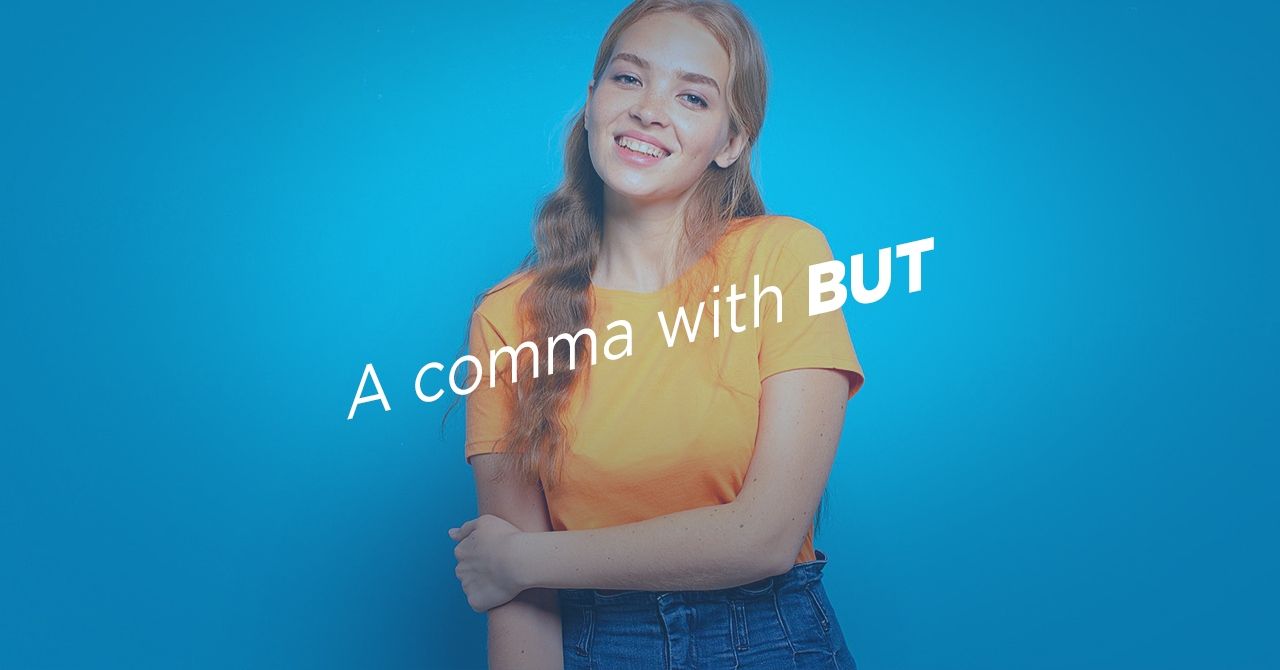Mastering the Comma: Before or After “But” in Casual English
Commas, those tiny punctuation marks, can hold immense power in shaping the clarity and flow of your writing. But when it comes to the conjunction “but,” things can get a little confusing in casual English. Here, we’ll explore the nitty-gritty of comma placement before and after “but” to ensure your writing shines.

Casual English refers to the informal language we use in everyday conversation, emails to friends, or even social media posts. It’s characterized by a relaxed tone and often prioritizes readability over strict grammatical rules.

“But” acts as a conjunction, typically used to introduce a contrast or opposition to the preceding statement. It can connect two independent clauses (complete sentences) or a dependent clause (incomplete sentence) to an independent clause.

A comma precedes “but” when it joins two independent clauses. These clauses can stand alone as complete sentences, but “but” creates a smoother flow by combining them.

![Should You Put a Comma Before or After But? [Your Easy Guide] Should You Put a Comma Before or After But? [Your Easy Guide]](https://irp.cdn-website.com/b4d93c25/dms3rep/multi/Comma-before-or-after-but.png)
There’s no comma before “but” when it introduces a dependent clause. Dependent clauses rely on the independent clause for meaning and cannot function alone as a sentence.

This is where casual English offers some flexibility. Traditionally, a comma doesn’t follow “but” unless it’s introducing an interrupter. An interrupter is a word or phrase that adds emphasis or clarifies the statement.

However, in casual writing, you might see a comma after “but” even without an interrupter, often for a slight pause or emphasis.


While proper comma usage is essential for clear communication, casual English allows for some informality. If you’re unsure, remember that a comma before “but” connecting independent clauses is always safe. For everything else, focus on readability and the intended flow of your writing.

Mastering comma placement before and after “but” might seem like a small detail, but it significantly impacts your writing’s clarity and professionalism. By understanding the core rules and how they apply in casual settings, you can craft engaging and well-structured content that resonates with your audience. Remember, when in doubt, prioritize readability and don’t be afraid to consult online resources for further clarification.